Auctions
10 Eccentric Rich-Person Objects in Christie’s Rockefeller Sale That We Actually Want to Buy
From duck decoys to porcelain plates, the highly anticipated Rockefeller sale has all the tchotchkes you never new you needed.
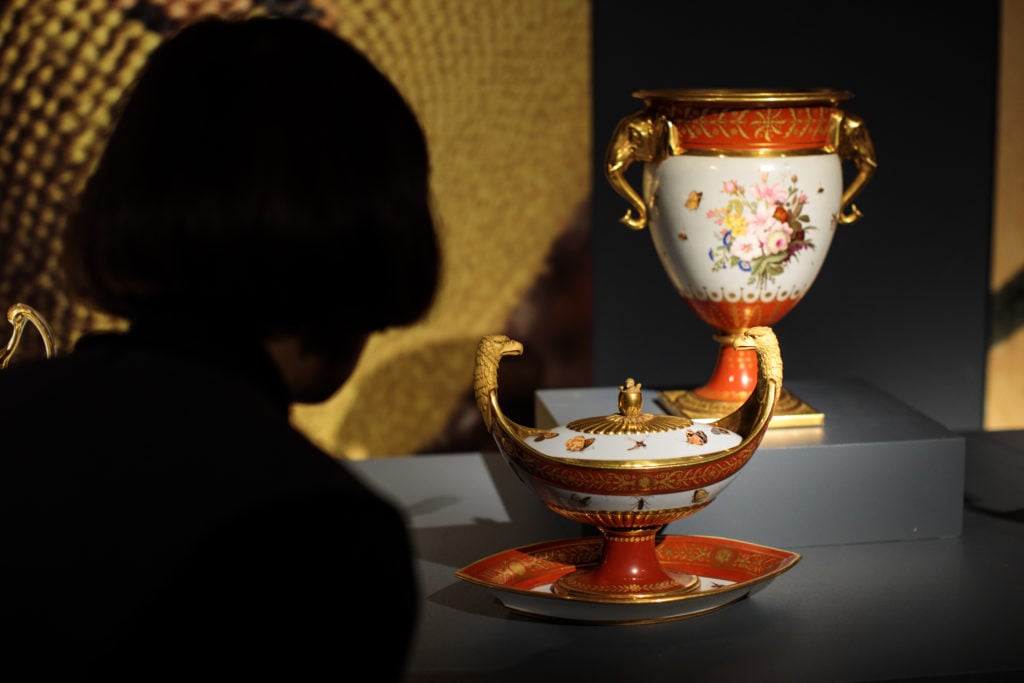
From duck decoys to porcelain plates, the highly anticipated Rockefeller sale has all the tchotchkes you never new you needed.

Artnet News

By now, you’ve probably heard about the Rose Period Picasso expected to fetch $100 million and the odalisque by Matisse that could reach $70 million at Christie’s this evening. But the Rockefeller Collection, which will be sold in a series of online and live auctions over the next few weeks, isn’t just for blue-chip blockbusters.
The famously discerning but eclectic Rockefellers amassed thousands of objects over several decades, ranging from a Leeds creamware sauceboat from 1800 (estimated to sell for between $200 and $300) to a number of vibrant, intricately patterned 20th-century Moroccan carpets (estimated between $2,000 and $3,000).
All told, around 1,500 of the family’s treasures will be sold, generating at least $600 million for a selection of charities, including the Museum of Modern Art in New York. The trove is also expected to shatter the record for the most valuable collection ever sold at auction. (Yves Saint Laurent and Pierre Bergé’s holdings currently hold that title, having sold for $400 million in 2009.) The live action kicks off tonight at Rockefeller Center with a 44-lot sale of Impressionist and Modern art—including that Picasso, which David Rockefeller hung facing his desk until his death last year at 101.
With around half of the lots being sold online, there are still plenty of opportunities for bargain hunters to get a piece of the Rockefeller name. We rounded up a few of the oddest and most interesting objects hitting the block in ascending price order.
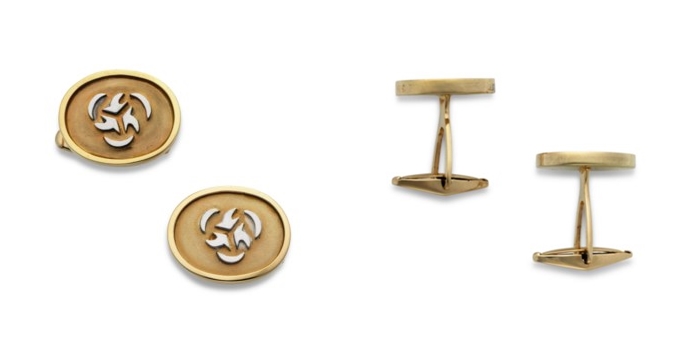
Bicolored Gold Cufflinks, inscribed “Dec. 1, 1998” with the Trilateral Commission logo set in white gold.
As of this writing, these yellow and white gold cufflinks—part of Christie’s online sale of Rockefeller works—have far surpassed their estimate. A total of 33 bids have inched the price up to $5,000. They were produced to celebrate the 25th anniversary of the Trilateral Commission, a group of the top minds in business, government, and academia founded by David Rockefeller, diplomat Zbigniew Brzezinski, and Former President Jimmy Carter in 1973. (Some have called the commission a “shadow government.”) If you are looking to talk your way into an Illuminati meeting, these would be a good accessory to have.
— Julia Halperin
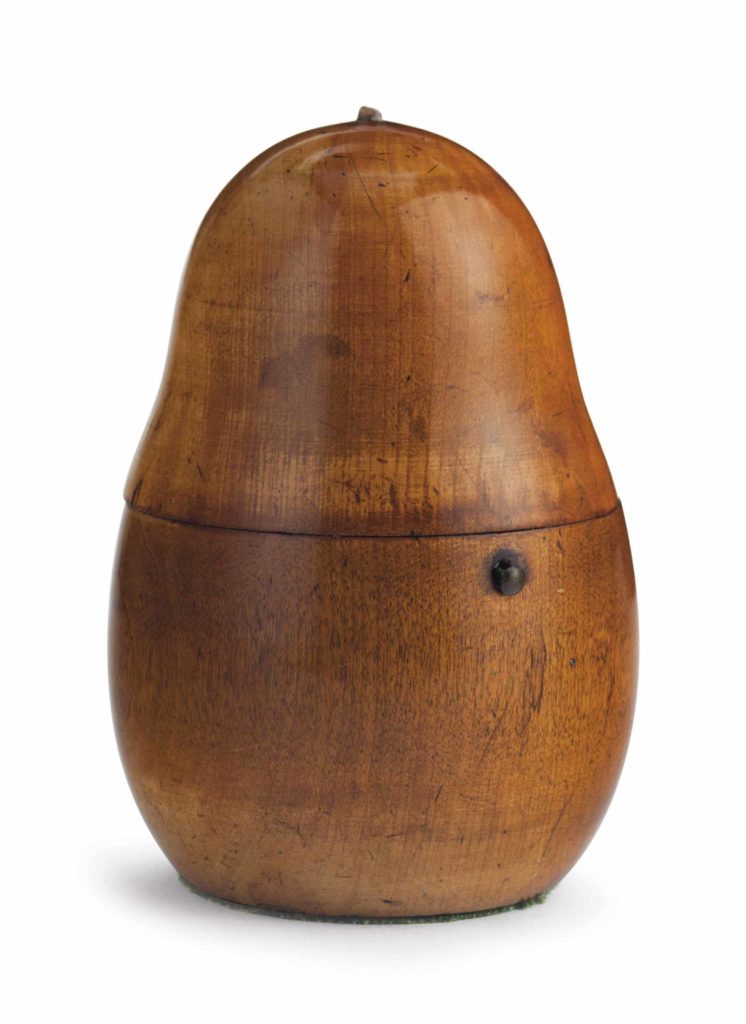
George III Pear-Form fruitwood tea caddy.
I don’t even drink tea, but I am still charmed by this diminutive object. It’s missing its stem, so it looks less like a pear than a cross between a shrunken Martin Puryear sculpture and a Russian nesting doll. But for 200 years old, I’d say this strikingly Modern, elegant caddy is looking pretty good.
— Julia Halperin
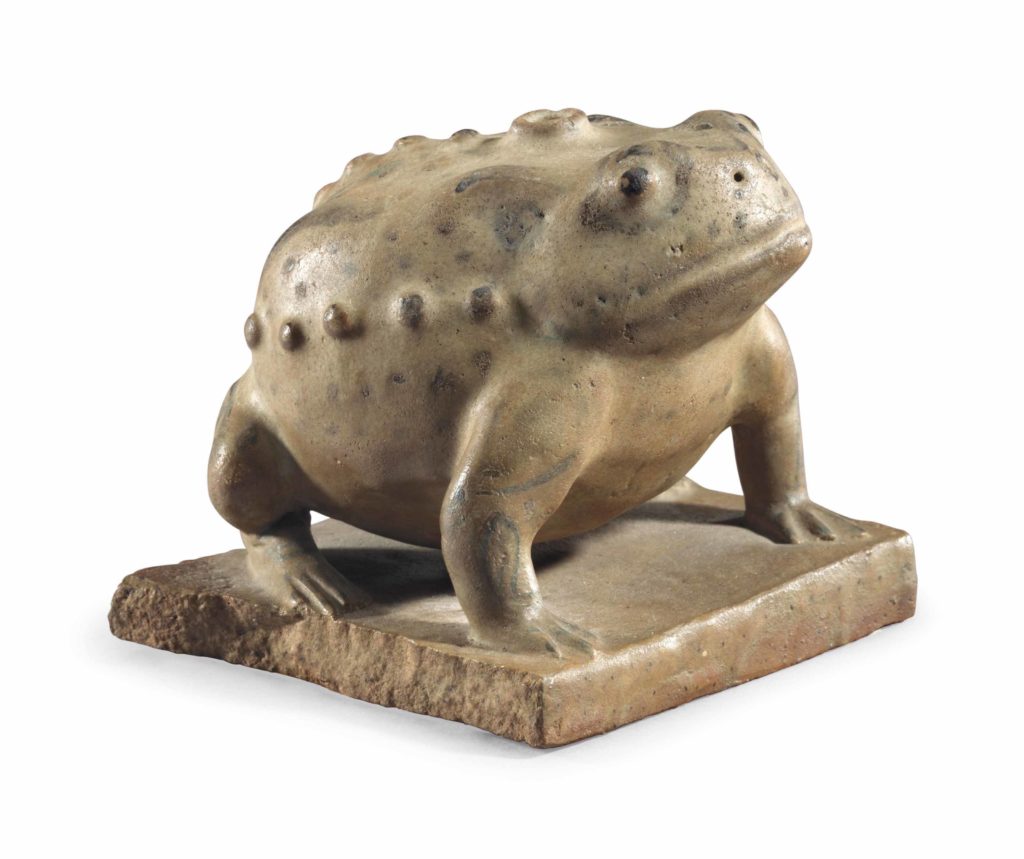
Pottery Water Dropper in the form of a toad, Thailand, 14th or 15th century. Image courtesy of Christie’s.
Water droppers are petite devices designed to hold a small amount of water and are used in East Asian calligraphy. In order to make ink, a few drops of water are dropped from the dropper onto the surface of an inkstone. This example, in the form of a toad, dates from the 14th to 15th centuries and hails from the Sawankhalok region of Thailand. The Rockefellers acquired it in Bangkok in 1974. The catalogue describes it as “modeled squatting, with globular eyes, its back with raised circular opening.”
—Eileen Kinsella
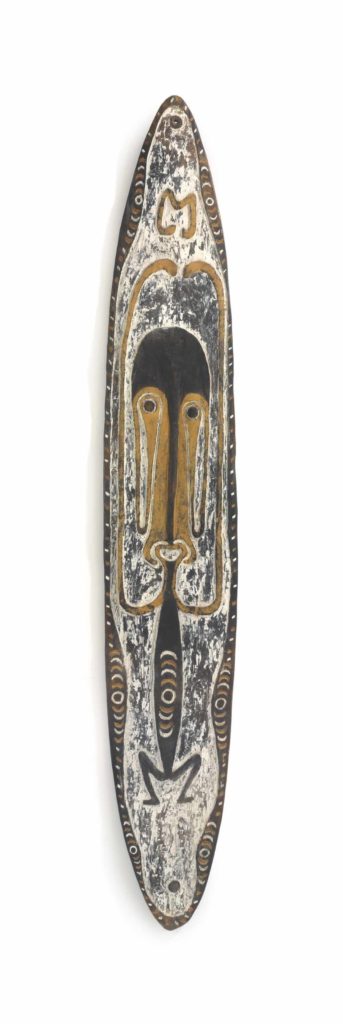
Papuan Gulf Gope Board, Mid 20th Century. Photo: courtesy of Christie’s.
Gope Boards are wooden ritual objects representing spirits that are believed to protect tribes from sickness, evil, and death, among other nefarious things. At 71 inches tall, this relatively large example features an intricately painted surface. And considering its relatively affordable price point, it’s perfect for keeping the malevolent forces at bay on a budget.
—Henri Neuendorf
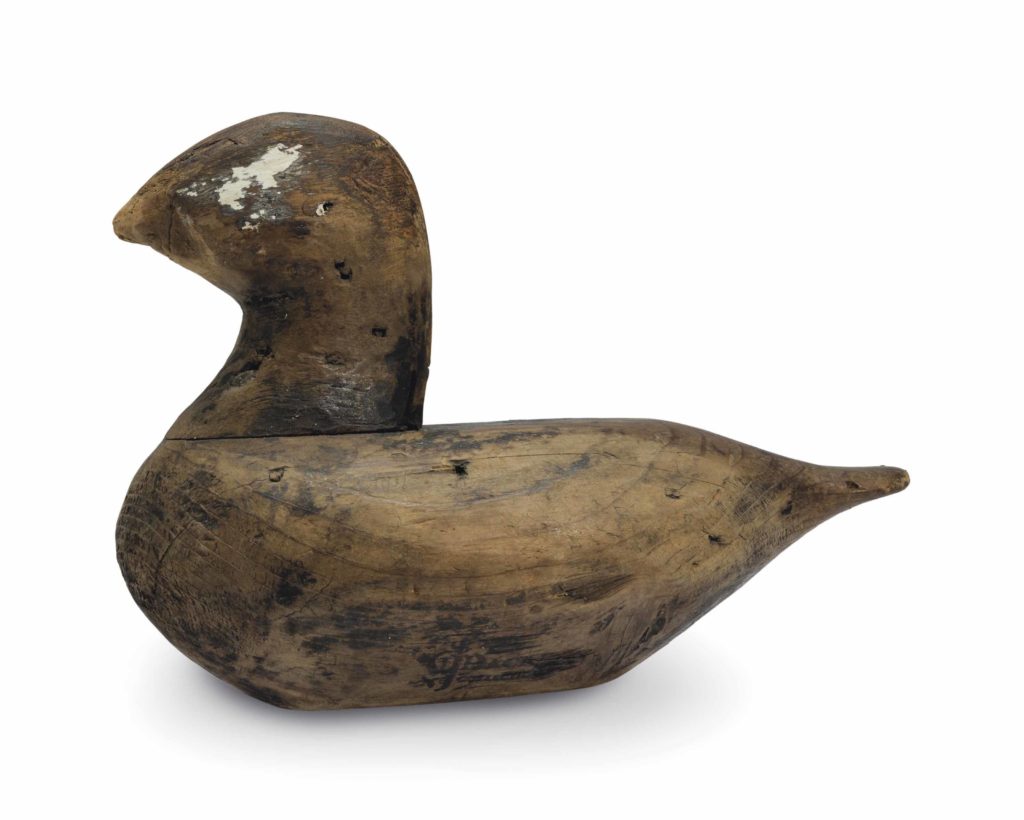
Early Ruddy Duck, Currituck, North Carolina, first quarter 20th Century. Image courtesy of Christie’s.
Fun fact about the duck decoy market: Collectors place a premium on decoys still harboring buckshot from their days as functional hunting aids. This means any good reseller or appraiser will send a decoy out for X-rays before placing a valuation on it. Although the visible holes in this Early Ruddy Duck suggest it took some hits in the line of duty, the more interesting aspect of the piece (and its brethren) owes to the Rockefellers’ conception of the decoys as sculptural offshoots of American folk art—another category collected in depth by the family. The link seems particularly viable in this piece. Nearly stripped of paint by time and wear, the duck’s form reduces to a Brâncusi-like essentialism.
—Tim Schneider
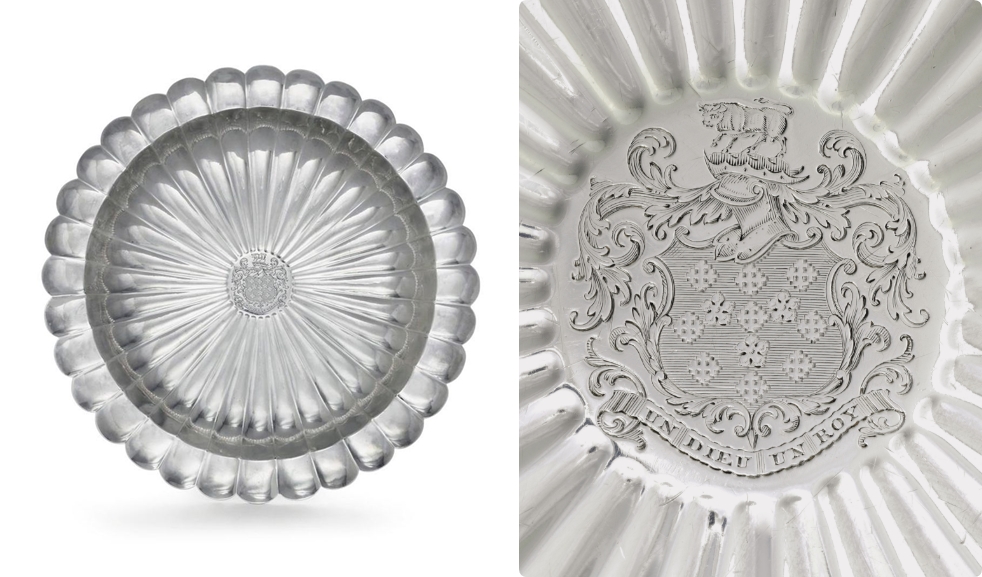
A George II Silver Dish, with the mark of Isabel Pero, London (1741). Image courtesy of Christie’s.
Although I know nothing about English silver, I’m fascinated by the story of this piece’s maker. Isabel Pero was not the only female silversmith in the 18th century—the National Museum of Women in the Arts staged a 2012 exhibition that included works by others—but she was one of the few. Can you imagine what a bad ass you had to be to reach renown in metalworking if you were equipped with two X chromosomes almost 300 years ago? History seems to have further polished Pero’s reputation as well. Refreshingly, her silver dish is estimated at four times the value of the one that follows it in the sale, made by a male silversmith across the English channel during the same period.
—Tim Schneider
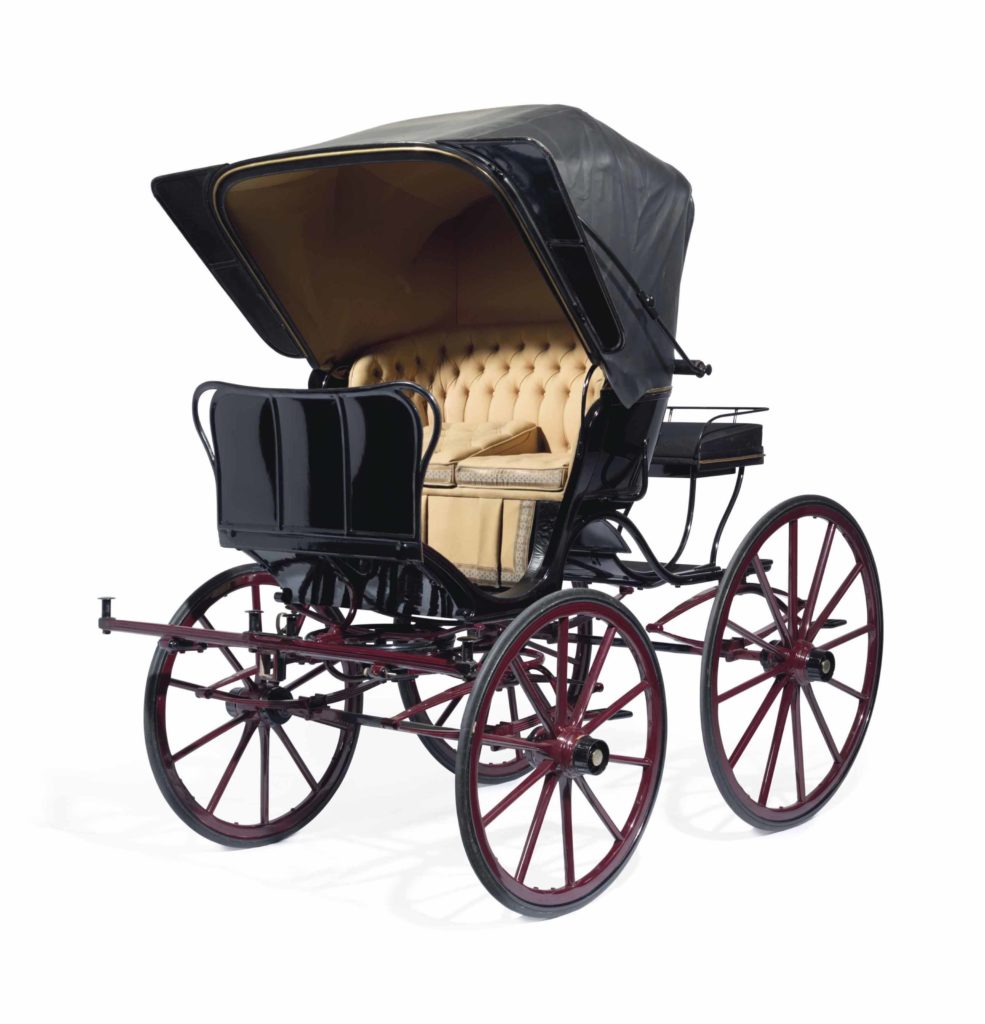
Hooded Spider Phaeton (Late 18th/Early 19th Century). Photo: courtesy of Christie’s.
One of three horse-drawn carriages in the sale, this light, four-wheeled, hooded version is built by American coach-builders A.T. Demarest & Co. It features a comfy upholstered bench and David Rockefeller’s “DR” monogram. You know what they say: If you plan on attending an event where a car just won’t cut it, make an unforgettable entrance in a horse-drawn buggy.
—Henri Neuendorf
David Rockefeller and his wife Peggy loved visiting the Antique Porcelain Company in London and New York, but did not buy much from them because, as he once said, “their prices always seemed so high.” However, Peggy fell head over heels for this pair of Chelsea plaice sauceboats, deeming them “truly outstanding.” As a result, David snapped them up: “I bought them for her as a surprise Christmas present….We feel they are among the finest pieces of porcelain we own.” Each spotted, scaly fish is naturalistically modeled. Its tail fin curls up to form a handle while its mouth is open to pour or receive a spoon. The cover handle is formed like a cluster of seaweed, while each spoon is formed in the shape of a long-tailed fish biting a shell.
—Eileen Kinsella
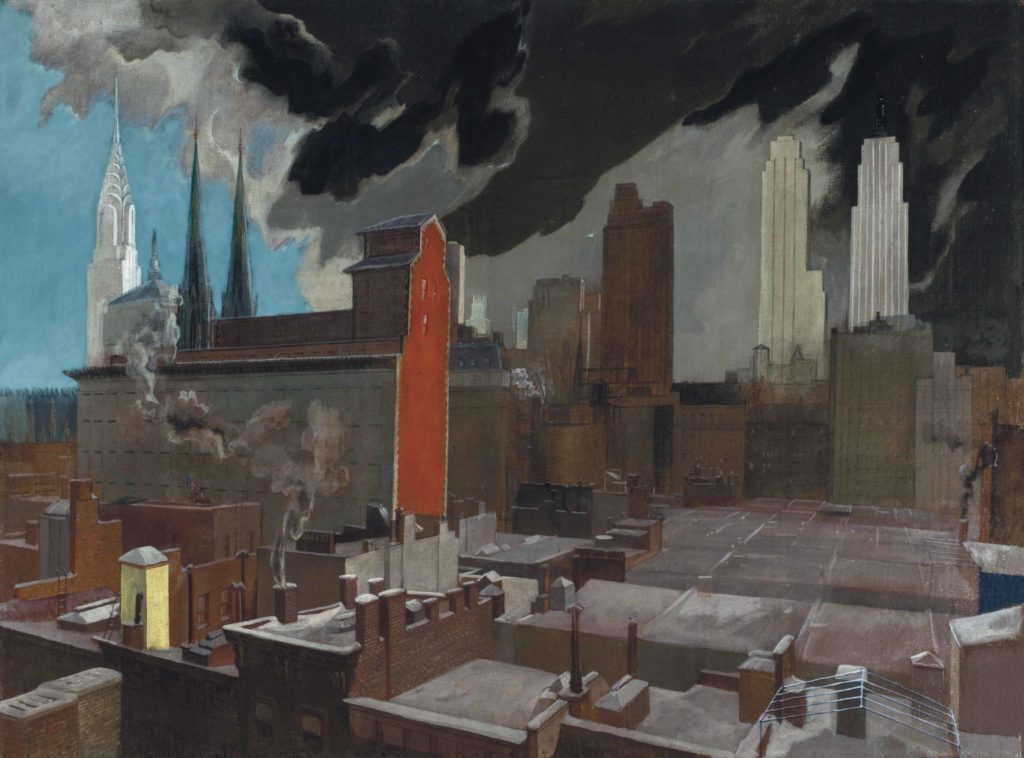
Stefan Hirsch’s Midtown Range (1931). Image courtesy of Christie’s.
Among the Rockefellers’ knockout collection of American paintings, this cityscape has special significance in the intertwined histories of both the family and New York City. Based partly on the vantage point, it is believed that Hirsch painted the picture from what was then David’s bedroom. And the drab grid of buildings occupying most of the composition would soon be torn down to make way for Rockefeller Center, an emblem of a new era of metropolitanism and might for the city—a future perhaps signaled here by the gleaming Chrysler building, rising against an approaching pocket of clear blue sky on the canvas’s left.
—Tim Schneider
Napoleon was said to have treasured this 256-piece Sèvres dessert service so much that, in 1814, he insisted on taking it into exile with him on the island of Elba. He originally ordered the service for his palace in Compiègne, but records show it was delivered in October 1809 to the palace of Fontainebleau instead. The emperor had retired there after the negotiations of the Treaty of Vienna, which ended hostilities between France and Austria. The porcelain was treasured by two generations of the Rockefeller family, according to Carleigh Queenth, the specialist head of European ceramics and glass at Christie’s New York.
—Eileen Kinsella